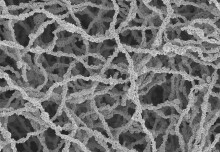

Between 3-7 August, Sara Giarola, a researcher from the SGI attended the “Energy Systems Integration (ESI) 102 Course
This was hosted by the International Institute for Energy Systems Integration (iiESI) of the U.S. Department of Energy’s National Renewable Energy Laboratory (NREL) in their headquarters located in Golden in Colorado. The course focused on modelling the integration of energy commodities such as heat, electricity, fuels, water, oil, coal and gas.
Energy systems modelling is a cornerstone activity of the SGI with the aim to produce long-term scenarios on the development of the energy systems and include all the energy sectors (e.g. from the primary energy sources supply, energy conversion and energy end-use).
How current energy systems are?
Energy systems include renewable, nuclear, and fossil energy sources as well as electrical, thermal, and fuel energy pathways that convert and deliver energy services to our homes, businesses, industries and vehicles (e.g. illumination, comfort at home, long-distance passenger transport).
They have become extremely interlinked: the natural gas and electrical transmission/ distribution systems exemplify the growth of the interactions of energy commodities with time at different geographical scales (e.g. cities, counties, districts, countries).
Similarly to the case of the UK displayed below, energy systems in developed countries generally show a profound dependence on primary fossil fuels (inputs on the left hand side of the diagram), a dominant role of oil in transport and significant losses in the transformations of energy. The final energy demand (on the right hand side) shows a minor presence of electricity and biofuels which currently represent the major vectors for delivering energy carbon intensity reduction.
What are the energy systems transition drivers?
A paradigm shift in current energy systems is advocated to answer the urgent quest for
– Energy security;
– Energy affordability and competitiveness;
– Clean energy conversion.
Why is integration important?
Energy systems integration enables the effective analysis, design, and control of interactions and interdependencies of energy commodities along technical, economic, regulatory, and social dimensions. Integrating energy commodities means identifying synergies, co-benefits and the most valuable coupling and interactions among them to fulfil energy service demand, and, at the same time, improve performance, reduce cost and environmental impacts.
How should the energy system be?
The societal development would be based on future energy systems seeking to be:
– Sustainable from the environmental, economic and social aspect
– Flexible, guaranteeing operational speed of response to energy demand variations
– Reliable, guaranteeing energy service fulfilment
– Resilient, guaranteeing energy service availability after extreme events in an economic way
– Adaptable, guaranteeing ability to undergo permanent changes in an economic way
How to realize more integrated systems?
– Integrating energy commodities
o The deployment of technologies such as combined heat and power and waste heat utilization can increase the overall system efficiency
o Microgrids, localized grids that can disconnect from the traditional grid to operate autonomously, can play an important role in transforming the electric grid. Since they are able to continue operating while the main grid is down, they can contribute to the overall increase of the energy system resilience. Also, they enable the integration of renewable sources of energy (such as solar and wind) as well as distributed energy resources (such as combined heat and power, energy storage, and demand response), thereby increasing the grid flexibility.
o The use of local sources of energy, such as solar PV, to serve local loads can contribute to the reduction of energy losses in transmission and distribution as well as of energy carbon intensity.
– Integrating data and energy management
o Increased deployment of energy system sensors can be used to optimally design and operate energy systems. For example, smart meters can provide detailed gas and electricity usage data for the design of future energy systems as well as for the monitoring of building functions and the control of heating and ventilation systems.
– Mathematical modelling is an invaluable tool to support energy systems integration and lead to a more sustainable energy infrastructure.
Article text (excluding photos or graphics) © Imperial College London.
Photos and graphics subject to third party copyright used with permission or © Imperial College London.
Reporter

Zara Qadir
Department of Earth Science & Engineering

Contact details
Email: press.office@imperial.ac.uk
Show all stories by this author



